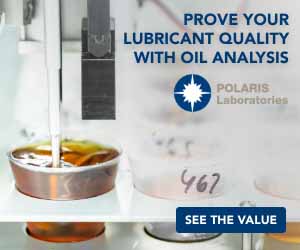If you’re like many maintenance and reliability professionals, oil analysis is a simple routine:
- Take oil samples from your machines periodically.
- Take action if the results are flagged yellow or red.
- Continue to use the lubricant if the results are green.
While this routine can serve you well, do you feel you’re missing out on some potential benefits of lubricant condition monitoring? What if there was a way to double or even triple the value you’re currently getting from your oil analysis program?
Let’s explore the available resources that could help you create a robust monitoring strategy.
Resources for Taking Lubricant Condition Monitoring to the Next Level
Lubricant Analysis Categories
Lubricant analysis tests can be organized into three groups:
- Lubricant properties: The intrinsic properties related to the lubricant formula.
- Lubricant contaminants: All materials, particles, or fluids that are not the pure intended lubricant.
- Machine wear
Lubricant Condition Monitoring Goals
Combining different test methods from the three categories to seek specific information is possible. For example, oil analysis can be used for the following purposes:
- Monitor the quality and cleanliness of a lubricant coming into the facility
- Determine whether a lubricant that has been stored for a long time is suitable for use
- Determine the right time to change or refresh oil in a large reservoir
- Optimize oil change intervals of a fleet
- Determine the need for decontamination
- Identify incorrect operational conditions
- Determine the effectiveness of actions taken (oil change, filtration, repair, etc.)
- Advanced analysis for failure investigation
Monitoring strategies
Routine Oil Analysis
This is the traditional periodic analysis of lubricants supported by an external lab. It is a great resource to monitor the three categories of oil analysis. Exception tests can be run to confirm results or to investigate additional properties.
Field Tests
These are oil tests performed with the support of a field lab, test kits, and visual inspections of oil. This resource provides quick results for immediate action.
On-line Sensors
Sensors are installed in a machine’s reservoir or circulation line for continuous or frequent monitoring of specific parameters. While modern sensors can detect some parameters with precision, they are not intended to replace full routine analysis supported by a laboratory.
Tailored Advanced Analysis
This refers to analysis with a tailored test suite to target specific information such as root cause analysis, product characterization, or advanced knowledge about the condition of a lubricant.
Stages of the Lubricant Life Cycle
Lubricants can be analyzed from the moment they are received in the plant to the point of their disposal. At which of the following points does lubricant condition monitoring make sense at your facility?

Other Condition Monitoring Strategies
Multiple condition monitoring technologies can be used together to enhance the capability to detect potential abnormal conditions in the machine or lubricant and the operational parameters. Vibration analysis, thermography, and ultrasound can be implemented with a good lubrication program and lubricant analysis plan.
Monitoring Strategy
Once all available resources are defined, it is time to design the lubricant condition monitoring strategy, using diverse monitoring resources and monitoring intervals at the specific lubricant stage in the lubricant life cycle in your facility. This will provide comprehensive and solid detection capabilities to support the reliability strategy of your facility or fleet.
I will explore how to create the monitoring strategy in a future article. Please let me know if I can help your reliability program. oilanalalysissolutions@gmail.com









